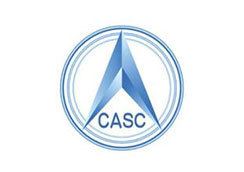Native name Chinese: 中国航天科技集团公司 Area served worldwide Revenue 294 billion CNY (2013) Number of employees 174,000 | Industry Aerospace, Defence Founded 1 July 1999 Type of business State owned company | |
 | ||
Predecessor China Aerospace Corporation Products SpacecraftsMissilesElectronics Subsidiaries | ||
Casc china aerospace science and technology corporation
The China Aerospace Science and Technology Corporation (CASC) is the main contractor for the Chinese space program. It is state-owned and has a number of subordinate entities which design, develop and manufacture a range of spacecraft, launch vehicles, strategic and tactical missile systems, and ground equipment. It was officially established in July 1999 as part of a Chinese government reform drive, having previously been one part of the former China Aerospace Corporation. Various incarnations of the program date back to 1956.
Contents
- Casc china aerospace science and technology corporation
- RD and Production Complexes
- Specialized Companies
- Directly Subordinated Units
- Development work
- Earth Imaging Effort
- References
Along with space and defence manufacture, CASC also produces a number of high-end civilian products such as machinery, chemicals, communications equipment, transportation equipment, computers, medical care products and environmental protection equipment. CASC provides commercial launch services to the international market and is one of the world's most advanced organizations in the development and deployment of high energy propellant technology, strap-on boosters, and launching multiple satellites atop a single rocket. By the end of 2013, the corporation has registered capital of CN¥294.02 billion and employs 170,000 people.
R&D and Production Complexes
Specialized Companies
Directly Subordinated Units
The "directly subordinated units" of the China Aerospace Science and Technology Corporation are:
Development work
In October 2013, the China Aerospace Science and Technology Corporation announced that it had completed a first ignition test on a new LOX/Liquid methane rocket engine. No engine size was provided.
Earth Imaging Effort
On December 28, 2016 the company launched Superview 1A and 1B aboard a LongMarch 2D rocket, two Earth imaging satellites equipped with 0.5 meter optical resolution. These satellites were described at the time as the first of an eventual 24-satellite constellation composed of 16 optical satellites, 4 high-resolution optical satellites, and 4 radar imaging satellites. The company initially planned to launch the satellites at a rate of 2 per year, with completion scheduled for 2022. The company planned to compete with international providers to sell imagery to both government and commercial customers.
